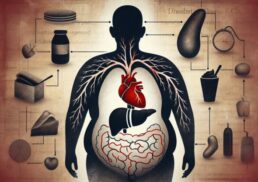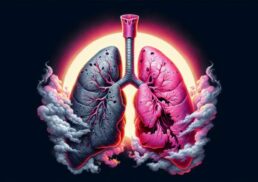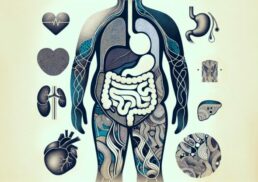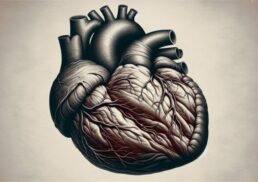Premenstrual Dysphoric Disorder (PMDD) is a severe form of premenstrual syndrome that can significantly impact the daily lives of those affected. Understanding the symptoms, causes, and treatment options of this condition is crucial for managing its effects and improving one’s quality of life. In this blog post, we will delve into the world of PMDD, exploring its definition, risk factors, and how it differs from the more common premenstrual syndrome (PMS). You’ll also learn how to recognize PMDD symptoms, the process of diagnosing this condition, and the various treatment options available. Finally, we will discuss coping strategies and support systems to help you or your loved ones navigate life with PMDD.
Table of Contents
Short Summary
Premenstrual Dysphoric Disorder (PMDD) is a type of mood disorder characterized by intense emotional and physical symptoms.
Diagnosis requires symptom tracking, differential diagnosis and meeting diagnostic criteria. Treatment includes lifestyle modifications, medication & support.
Self-care activities such as adequate sleep, balanced diet & relaxation techniques can help manage PMDD symptoms & improve quality of life.
Defining Premenstrual Dysphoric Disorder (PMDD)
Premenstrual dysphoric disorder (PMDD) is a chronic medical condition characterized by intense emotional and physical symptoms that can interfere with daily activities. PMDD is caused by hormonal fluctuations and increased sensitivity to these hormonal changes during the menstrual cycle. It is estimated that up to 10% of women or people assigned female at birth (AFAB) of reproductive age are affected by PMDD, which is a type of mood disorder that occurs during the menstrual cycle and is more severe than premenstrual syndrome. If left untreated, PMDD can progress to depression and, in the most extreme cases, suicide.
Identifying and managing trigger symptoms can help in managing PMDD effectively. Some common symptoms of PMDD include:
Mood swings
Irritability
Anxiety
Depression
Fatigue
Bloating
Breast tenderness
Headaches
By recognizing these symptoms and implementing strategies to manage them, individuals with PMDD can improve their quality of life and reduce the impact of the disorder on their daily activities.
While PMDD and PMS share some similarities, such as the occurrence during the menstrual cycle and the presence of physical symptoms like cramps and headaches, PMDD is distinguished by its severe emotional symptoms, which can impede one’s mood. The fluctuations in levels of estrogen and progesterone during the menstrual cycle can impact an individual’s susceptibility to PMDD, with research also suggesting that serotonin, a brain chemical that regulates mood, hunger, and sleep, may be involved. Understanding how PMDD affects individuals is crucial for proper diagnosis and treatment.
Severity of PMDD Symptoms
The key difference between PMDD and PMS lies in the severity of the symptoms. Women experiencing PMDD suffer from more intense mood fluctuations, anxiety, and depression, which can significantly disrupt daily activities. These severe emotional symptoms can cause considerable psychological turmoil, negatively affecting interpersonal relationships and professional lives.
Physical symptoms associated with PMDD, such as headaches and dizziness, can also be more pronounced than those experienced with PMS. The debilitating nature of PMDD symptoms highlights the importance of understanding the condition and seeking appropriate treatment and support.
PMDD Risk Factors
Like any medical condition, certain risk factors can contribute to the development of PMDD. These include:
Past trauma
Smoking
Obesity
Genetics
Understanding these risk factors can help individuals take preventive measures or seek appropriate interventions to manage their symptoms.
It is worth noting that while these risk factors may contribute to the likelihood of developing PMDD, not every woman with these risk factors will necessarily experience the condition. Individual responses to hormonal changes and other factors can vary, highlighting the importance of personalized care and treatment plans.
Recognizing PMDD Symptoms

Recognizing the symptoms of PMDD is crucial for seeking appropriate treatment and support. PMDD symptoms typically manifest during the week prior to menstruation and abate within a few days of the commencement of the period. They can be broadly categorized into:
Emotional symptoms: mood swings, irritability, depression, anxiety, feeling overwhelmed
Physical symptoms: bloating, breast tenderness, fatigue, headaches, joint or muscle pain
Neurological symptoms: difficulty concentrating, forgetfulness, confusion, changes in appetite or sleep patterns
These physical and behavioral symptoms can have a significant impact on daily life, especially when experiencing severe symptoms.
It is important to differentiate PMDD from other mental disorders or medical conditions that may have similar symptoms, such as anxiety or depression. This distinction ensures that the appropriate treatment is sought and that the underlying cause of the symptoms is addressed effectively.
Emotional Symptoms
Emotional symptoms are a key aspect of PMDD and can be particularly debilitating. Women with PMDD may experience:
Mood swings
Depression
Intense anger
Tension
Anxiety
These emotional disturbances, often associated with bipolar disorder, can negatively impact one’s daily functioning and relationships, and are commonly referred to as mood disorders.
The emotional symptoms of PMDD include:
Extreme mood swings
Irritability and anger
Anxiety and tension
Depression and sadness
Feeling overwhelmed or out of control
These mental health symptoms can significantly impact daily life and relationships. It is important to be aware of these emotional symptoms and seek appropriate support and treatment.
Physical Symptoms
In addition to the emotional symptoms, PMDD also presents with a range of physical symptoms. These can include:
headache
dizziness
fainting
numbness or tingling in the arms or legs
easy bruising
cramps
bloating
breast tenderness
joint or muscle pain
belly bloating
weight gain
Physical and emotional symptoms can further contribute to the impairment of daily functioning, especially for those with PMDD. Some common physical symptoms of PMDD include:
Breast tenderness
Bloating
Headaches
Joint or muscle pain
Fatigue
Changes in appetite or food cravings
Sleep disturbances
Identifying and addressing these physical symptoms is an important aspect of managing PMDD as a whole.
Duration and Timing of Symptoms
The timing and duration of PMDD symptoms are important factors in identifying the condition. PMDD symptoms typically arise 6-14 days prior to menstruation and dissipate within the initial few days of the period. The duration of symptoms experienced by women with PMDD can range from a few days to two weeks. Generally, symptoms are most intense six days prior to the onset of menses and peak two days before.
Understanding the duration and timing of symptoms can help in differentiating PMDD from other conditions that may have overlapping symptoms, such as anxiety or depression, and ensure that appropriate treatment is sought.
Diagnosing PMDD
Diagnosing PMDD involves a combination of symptom tracking, differential diagnosis, and meeting specific diagnostic criteria. The diagnosis of PMDD requires five or more emotional and physical symptoms, with at least one directly affecting mood. These symptoms must occur regularly before or during the menstrual cycle for a diagnosis to be made. Accurate diagnosis is essential for determining the most appropriate treatment options and managing the condition effectively.
Learn more, please visit How is PMDD diagnosed?
It is important to consider other psychiatric disorders or medical conditions that may present similar symptoms when diagnosing PMDD. This process, known as differential diagnosis, helps to ensure that the appropriate treatment is provided for the underlying cause of the symptoms.
Symptom Tracking
Symptom tracking is a critical component of the diagnostic process for PMDD. Maintaining a symptom log that records the intensity and timing of symptoms in relation to menstruation can help healthcare providers accurately diagnose the condition. Assessment scales that can be used to assess and track symptoms include:
Premenstrual Symptom Screening Tool (PSST)
Calendar of Premenstrual Experiences (COPE)
Daily Record of Severity of Problems (DRSP)
PROMIS computerized adaptive testing (PROMIS CAT)
These assessment scales can provide valuable information for healthcare providers in diagnosing and managing PMDD.
Through diligent symptom tracking, individuals can provide their healthcare providers with valuable information to determine whether PMDD is the cause of their symptoms and identify the most appropriate treatment options.
Differential Diagnosis
Differential diagnosis is crucial for accurately diagnosing PMDD and ruling out other psychiatric disorders or medical conditions that may present similar symptoms. Conditions such as:
anxiety
depression
reproductive disorders
thyroid disease
May have overlapping symptoms with PMDD. In some cases, symptoms may be attributed to conditions like mastalgia or generalized anxiety disorder, which do not fluctuate with the menstrual cycle.
By considering and ruling out these other conditions, healthcare providers can ensure that the most appropriate treatment is provided for the underlying cause of the symptoms, ultimately leading to better management of PMDD symptoms.
Treatment Options for PMDD
Treatment options for PMDD are designed to help manage symptoms and improve the overall quality of life for those affected. These options can include lifestyle changes, such as exercise and stress management, and medications like Selective Serotonin Reuptake Inhibitors (SSRIs) and hormonal therapies. It is essential to discuss these treatment options with a healthcare provider to ensure they are safe and effective for the individual.
Tailoring treatment plans to the specific needs of the individual is crucial for effectively managing PMDD symptoms and improving their overall well-being. A combination of lifestyle changes, medications, and support can help individuals with PMDD lead healthy, fulfilling lives.
Lifestyle Changes
Lifestyle changes can play a significant role in alleviating PMDD symptoms and improving overall well-being. Some recommended changes include:
Regular exercise
Maintaining a healthy diet
Practicing relaxation techniques, such as yoga and meditation
Ensuring adequate sleep
Avoiding smoking and excessive alcohol consumption
These changes can help reduce stress and enhance mood, leading to better symptom management.
It’s important to recognize that while lifestyle changes can help manage PMDD symptoms, they may not be sufficient for everyone. In some cases, medications or other forms of treatment may be necessary to effectively manage the condition.
Medications
Medications can be an effective treatment option for managing the symptoms of PMDD. Selective Serotonin Reuptake Inhibitors (SSRIs) are a class of antidepressants commonly prescribed to treat PMDD due to their ability to alleviate mood-related symptoms. Hormonal therapies, such as birth control pills or hormone replacement therapy, can also be prescribed to help manage PMDD symptoms by regulating hormone levels.
It is crucial to discuss medication options with a healthcare provider, as they can help determine the most appropriate treatment plan based on the individual’s specific needs and medical history. In some cases, a combination of medications and lifestyle changes may be necessary for optimal symptom management.
Coping Strategies and Support
Coping strategies and support systems can be invaluable for individuals with PMDD, helping them navigate the challenges of the condition and improve their overall well-being. Seeking professional mental health support, joining relevant support groups, and engaging in self-care activities can all contribute to better symptom management and quality of life.
Having a strong support system in place can help individuals with PMDD feel understood, validated, and empowered to take control of their symptoms. Friends, family, and healthcare providers can all play a role in providing this support.
Mental Health Support
Mental health support, such as therapy or counseling, can help individuals with PMDD manage their symptoms and improve their quality of life. Various forms of therapy, including cognitive-behavioral therapy and psychotherapy, can be particularly beneficial for addressing the emotional components of PMDD, such as mood swings and depression.
Finding a mental health professional who is knowledgeable in treating PMDD is essential in ensuring the most effective support and treatment plan. It’s also important to find a provider who is a good fit for the individual’s needs and preferences, as this can greatly impact the success of therapy or counseling.
Self-Care Tips
Practicing self-care is an essential aspect of managing PMDD symptoms and promoting overall well-being. Some self-care strategies include:
Obtaining sufficient sleep
Consuming a balanced diet
Engaging in regular physical activity
Utilizing relaxation techniques such as yoga and meditation
These practices can help reduce stress, enhance mood, and provide essential nutrients that can reduce PMDD symptoms.
Incorporating self-care into one’s daily routine can help individuals with PMDD take control of their symptoms and improve their overall quality of life. It’s essential to find the self-care practices that work best for the individual and prioritize their well-being.
Summary
In conclusion, understanding PMDD, its symptoms, and treatment options is crucial for effectively managing the condition and improving one’s quality of life. By recognizing PMDD symptoms, seeking appropriate diagnosis and treatment, making lifestyle changes, and utilizing coping strategies and support systems, individuals with PMDD can take control of their symptoms and lead healthy, fulfilling lives. Always remember that you are not alone in this journey, and there is help available to navigate the challenges of PMDD.
Frequently Asked Questions
How do you know if you have PMDD?
PMDD can be diagnosed by talking to a healthcare provider and evaluating the symptoms, including keeping a calendar or diary of them. To be diagnosed with PMDD, there must be five or more PMDD symptoms, including one mood-related symptom.
Common physical PMS symptoms such as cramps, bloating, breast tenderness, headaches, depression, sadness, tension and anxiety may also be present.
What triggers PMDD?
PMDD is believed to be an abnormal reaction to normal hormone changes that occur during each menstrual cycle, resulting in a serotonin deficiency.
Recent research suggests that PMDD may be caused by increased sensitivity to these hormonal changes.
What age does PMDD usually start?
PMDD usually starts in the late teenage or early adult years, typically around the age of 26. It causes severe irritability, depression, anxiety, and disruption of daily living tasks in the week or two before your period starts.
Usually, these symptoms disappear a few days after the period starts.
What can PMDD be mistaken for?
PMDD can often be mistaken for bipolar disorder due to overlapping symptoms, leading many to an inaccurate diagnosis.
However, there are some key differences between the two conditions that can help distinguish them. For example, PMDD is a cyclical disorder that is linked to the menstrual cycle, while bipolar disorder is a cyclical disorder that is linked to the menstrual cycle.
What is the main difference between PMDD and PMS?
The main difference between PMDD and PMS is the intensity of symptoms experienced with PMDD, which can have a greater impact on daily activities.
Symptoms of PMDD can include mood swings, irritability, depression, anxiety, fatigue, and changes in appetite. These symptoms can be more severe than those experienced with PMS and can interfere with daily activities such as work.









